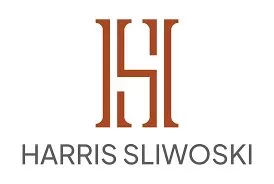Trade dress, a subset of trademark law, plays a critical role in protecting the unique visual identity of businesses, including restaurants and hotels. Violations of trade dress can lead to significant intellectual property concerns, impacting a business's reputation and market position.
This blog post explores the concept of trade dress, its importance in the hospitality industry, and the challenges posed by infringement.
What Is Trade Dress?
Trade dress, or "get-up", refers to the overall appearance and design of a product or service that distinguishes a company from its competitors. It's the look and feel that distinguishes it from others. It includes elements such as color schemes, shapes, textures, graphics, and even architectural features. For restaurants and hotels, trade dress can encompass interior and exterior designs, menu layouts, or distinctive plating of dishes.
Under the Lanham Act, trade dress must meet two criteria for protection:
- Distinctiveness: The design or appearance must be inherently unique or have acquired distinctiveness through consistent use.
- Non-functionality: The protected elements should not be essential to the product's use or affect its cost or quality.
Why Trade Dress Matters in Hospitality
In the competitive hospitality industry, trade dress serves as a powerful tool for brand recognition. For example:
- The red and white vertical stripes of a KFC's exterior or the yellow trim of a McDonald's restaurant.
- A restaurant chain like P.F. Chang's uses specific ornate interior Asian style designs to create a recognizable customer experience.
- Hotels often rely on unique architectural features or interior décor to stand out in the market (think Hard Rock Hotels).
These companies, along with many others, have created looks and feels that are unquestionably theirs. Protecting these elements ensures that customers can easily identify the source of services and prevents competitors from unfairly capitalizing on established goodwill.
Common Trade Dress Violations
Trade dress infringement occurs when a competitor mimics the distinctive appearance of another business, leading to consumer confusion. For example:
- A restaurant copying the interior design or menu layout of an established chain.
- Hotels replicating signature architectural styles or décor themes.
These violations not only dilute brand identity but can also tarnish reputations if associated with inferior services.
How to Protect Your Company Against Trade Dress Violations
Businesses can protect their trade dress through several key legal tools:
Trademark Registration
Under the Lanham Act, you can register trademarks for distinctive non-functional elements of your trade dress. This can include service marks (used to identify services, like restaurant or hotel services – typically Class 42) and potentially even trade dress marks themselves if the entire visual appearance is inherently distinctive or has acquired distinctiveness. Registration provides nationwide protection and strengthens your legal standing against infringers.
Copyright Protection
While you cannot copyright the functional aspects of a building, copyright law protects the architectural plans and designs themselves. This includes the drawings, blueprints, and models. Furthermore, the artistic expression within the building's design, such as unique sculptural elements, artwork integrated into the structure, or distinctive and non-functional aesthetic features, may also be copyrightable.
Design Patents
For specific ornamental designs of an article of manufacture, such as a uniquely shaped bottle for condiments used in your restaurant or a distinctive furniture design in your hotel lobby, a design patent can offer protection for the way an article looks.
Dilution/Infringement Claims
Protect your trade dress elements from being weakened/diluted by unrelated associations (e.g., tarnishment). In cases of infringement, you should pursue legal remedies such as injunctions and monetary damages.
Challenges in Enforcing Trade Dress Rights
Despite legal protections, enforcing trade dress rights can be complex:
- Proving distinctiveness and non-functionality often requires extensive documentation.
- Unregistered trade dress faces higher burdens of proof in court.
- The hospitality industry's reliance on community norms rather than formal IP laws makes it vulnerable to violations.
For instance, the protection of artistic food preparation designs is difficult, especially in light of accepted cultural norms for sharing and borrowing recipes and culinary designs. Some protections may be available in limited circumstances, such as with a chef's signature dish, or applying for a design patent for an ornamental plating arrangement. But even with such protection potentially available, successfully prevailing in an enforcement action is not guaranteed.
Best Practices for Protecting Your Trade Dress
To safeguard their intellectual property, restaurants and hotels should:
- Document Trade Dress: Maintain detailed records of design elements in company manuals.
- Register IP Assets: File trademark applications for distinctive features and copyright applications for architectural works.
- Monitor Competitors: Regularly review market activities to identify potential infringements.
- Educate Franchisees: Include detailed descriptions of trade dress in franchise manuals to ensure consistency across locations.
Conclusion
From the consistent aesthetics of your physical locations to the "look and feel" of your website and social media, your visual identity constitutes valuable trade dress. Given the significant risks that violations pose to your brand and competitive edge, a proactive and comprehensive strategy for protecting this unique visual identity across all platforms is paramount for restaurants and hotels aiming to secure their market position and cultivate lasting customer connections.
Copycat Concerns: What Hospitality Brands Need To Know About Trade Dress
The content of this article is intended to provide a general guide to the subject matter. Specialist advice should be sought about your specific circumstances.



